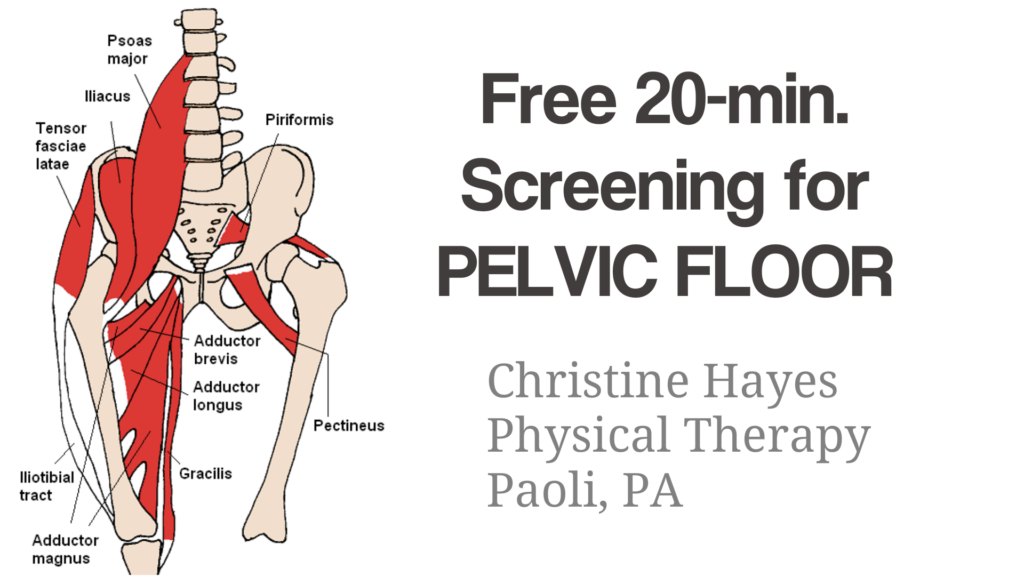Imagine this: you’re in the middle of a workout, feeling strong and energized. Suddenly, a sharp pain shoots through your abdomen, stopping you in your tracks. You clench your stomach, hoping the pain will subside. But it doesn’t. This scenario, unfortunately, is a common experience for many individuals who suffer from pelvic floor dysfunction. While you might associate pelvic floor issues with bladder control and childbirth, the reality is that they can extend far beyond, even manifesting as abdominal pain. This article delves into the intricate relationship between pelvic floor dysfunction and abdominal pain, shedding light on the causes, symptoms, and potential treatments.

Image: healthandfitnessadviser.com
The pelvic floor is a group of muscles that form a hammock-like structure at the base of your pelvis. It supports your internal organs, including the bladder, rectum, and uterus. When these muscles become weak, overactive, or dysfunctional, they can disrupt the normal functioning of your pelvic organs, leading to a wide range of symptoms, including abdominal pain.
Understanding Pelvic Floor Dysfunction
Before we explore the connection between pelvic floor dysfunction and abdominal pain, let’s first get a clear understanding of what pelvic floor dysfunction is and how it can occur.
What is Pelvic Floor Dysfunction?
Pelvic floor dysfunction refers to any condition that affects the normal function of the pelvic floor muscles. This can include:
- Weakness: When the pelvic floor muscles become weak, they can no longer adequately support the organs, leading to problems with bladder control, bowel function, and sexual function.
- Tightness: If the pelvic floor muscles are overly tight, they can constrict the organs, leading to pain, difficulty with urination or defecation, and discomfort during intercourse.
- Dyscoordination: When the pelvic floor muscles don’t contract or relax in a coordinated manner, this can further impact bladder control, bowel function, and sexual function.
Causes of Pelvic Floor Dysfunction:
While pelvic floor dysfunction can occur in anyone, it’s more common in women, particularly those who have given birth. Other factors that can contribute to pelvic floor dysfunction include:
- Pregnancy and Childbirth: The weight of the growing baby and the stretching of the pelvic floor muscles during labor can lead to weakness.
- Age: The pelvic floor muscles naturally weaken with age.
- Chronic Constipation or Diarrhea: Frequent straining during bowel movements can damage the pelvic floor muscles.
- Obesity: Excess weight puts additional stress on the pelvic floor muscles.
- Surgery: Pelvic surgeries, such as hysterectomy, can sometimes affect the pelvic floor muscles.
- Neurological Conditions: Conditions like multiple sclerosis or spinal cord injury can disrupt the nerve signals to the pelvic floor muscles.
- Mental Health: Chronic stress, anxiety, and depression can contribute to muscle tension, including in the pelvic floor.
The Link Between Pelvic Floor Dysfunction and Abdominal Pain
While the connection between pelvic floor dysfunction and abdominal pain might not be immediately obvious, understanding the anatomy and function of the pelvic floor helps clarify the relationship.
How Pelvic Floor Dysfunction Can Cause Abdominal Pain:
- Muscle Tension: When the pelvic floor muscles are tight or spasmed, they can pull on the surrounding tissues, including the muscles and ligaments in the abdomen. This tension can lead to pain that can feel like a pulling or cramping sensation.
- Nerve Entrapment: The pelvic floor muscles are densely innervated, meaning they have a rich supply of nerves. When these muscles are dysfunctional, they can compress or irritate nearby nerves, causing pain that can radiate to the abdomen.
- Organ Dysfunction: When the pelvic floor muscles don’t work properly, it can affect the organs they support, such as the bladder and intestines. This can lead to pain, bloating, and discomfort in the abdomen.
- Referred Pain: Pain originating from the pelvic floor can sometimes be referred to other areas of the body, including the abdomen. This means that you might feel pain in your abdomen, even though the source of the pain is actually your pelvic floor.
Types of Abdominal Pain Associated with Pelvic Floor Dysfunction:
- Lower abdominal pain: This is the most common type of abdominal pain associated with pelvic floor dysfunction. It can be localized to the lower abdomen or radiate to the back or groin.
- Pelvic pain: This type of pain is located in the pelvic area and can be accompanied by discomfort during intercourse, urination, or bowel movements.
- Pain during exercise: Some individuals may experience abdominal pain when they exercise, particularly when they engage in high-impact activities.
- Chronic abdominal pain: This pain can persist for weeks, months, or even years and can be debilitating.
Diagnosing Pelvic Floor Dysfunction
Diagnosing pelvic floor dysfunction can be challenging because the symptoms can be caused by other conditions. However, a healthcare professional can help you pinpoint the underlying cause of your abdominal pain.
Diagnosis typically involves:
- Physical Examination: Your doctor will ask about your symptoms, medical history, and lifestyle. They will also perform a physical examination of your abdomen and pelvic floor muscles.
- Imaging Tests: Imaging tests, such as ultrasound or MRI, may be used to rule out other conditions.
- Pelvic Floor Muscle Assessment: A pelvic floor muscle assessment can be performed by a physical therapist specializing in pelvic floor health. This assessment helps assess the strength, coordination, and function of your pelvic floor muscles.

Image: chayespt.com
Treatment Options for Pelvic Floor Dysfunction and Abdominal Pain
The good news is that pelvic floor dysfunction is often treatable. The treatment approach will depend on the underlying cause of the dysfunction and the severity of your symptoms.
Common Treatments:
- Physical Therapy: Pelvic floor physical therapy is a highly effective treatment for pelvic floor dysfunction. It involves exercises and techniques designed to strengthen, relax, and improve the coordination of your pelvic floor muscles.
- Biofeedback: Biofeedback is a technique that allows you to monitor your muscle activity in real-time. It can help you learn to relax and control your pelvic floor muscles.
- Medications: In some cases, medications, such as muscle relaxants or anti-inflammatory drugs, may be used to relieve pain and muscle tension.
- Lifestyle Changes: Lifestyle changes, such as weight loss, stress management, and dietary modifications, can help improve pelvic floor function.
- Surgery: In rare cases, surgery may be necessary to correct underlying structural problems.
Expert Insights and Actionable Tips
“It’s crucial to remember that every individual is different, and what works for one person may not work for another,” emphasizes Dr. Sarah Jones, a renowned pelvic floor physical therapist. “Consulting with a healthcare professional who specializes in pelvic floor health is essential for individualized treatment plans and effective management of symptoms.”
Here are some actionable tips that may help address abdominal pain associated with pelvic floor dysfunction:
- Engage in Pelvic Floor Muscle Exercises: Exercises like Kegels can help strengthen your pelvic floor muscles. These exercises can be done anywhere, anytime.
- Reduce Stress: Chronic stress can lead to pelvic floor tension. Incorporate stress management techniques like yoga, meditation, or deep breathing exercises into your daily routine.
- Seek Out a Pelvic Floor Physical Therapist: A physical therapist specializing in pelvic floor health can assess your individual needs, provide personalized treatment plans, and teach you proper techniques to manage your condition.
Can Pelvic Floor Dysfunction Cause Abdominal Pain
Conclusion
The connection between pelvic floor dysfunction and abdominal pain is a complex one that deserves attention. Understanding the causes, symptoms, and potential treatments is crucial for managing this condition effectively.
If you experience persistent and debilitating abdominal pain, consult with a healthcare professional or a pelvic floor physical therapist. You are not alone, and with the right treatment, you can find relief and improve your quality of life.






